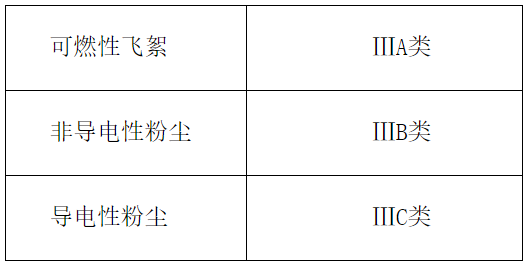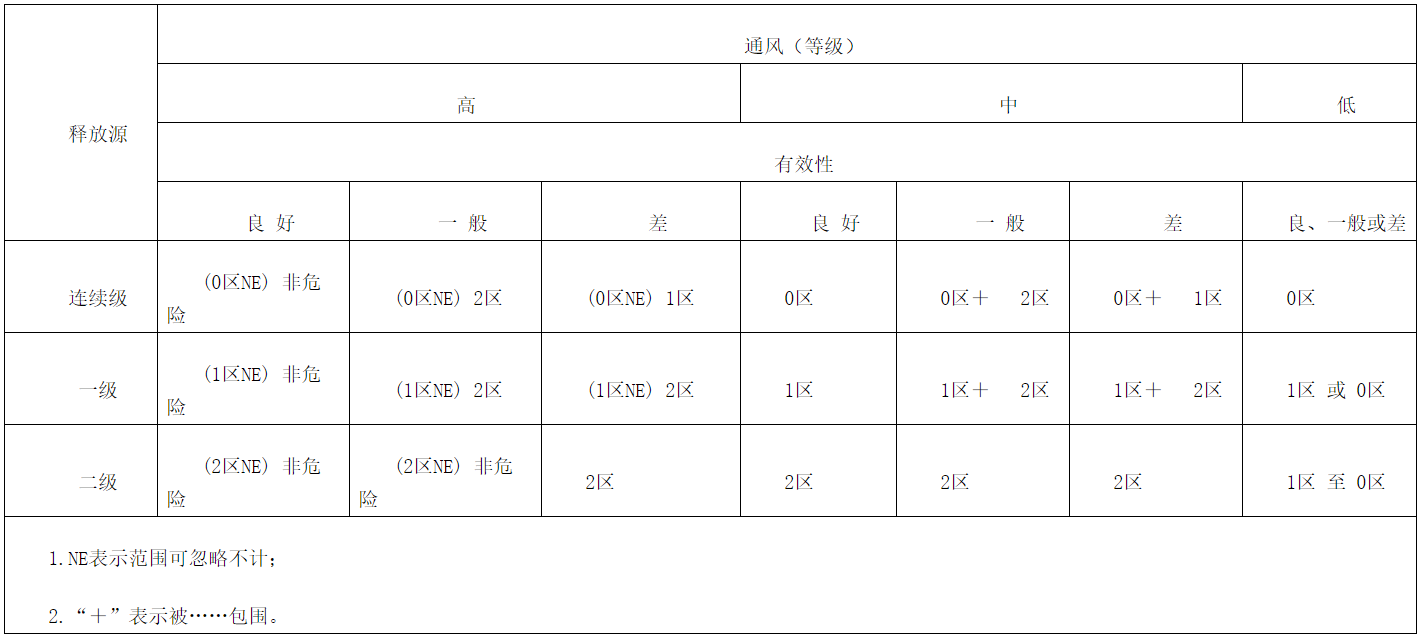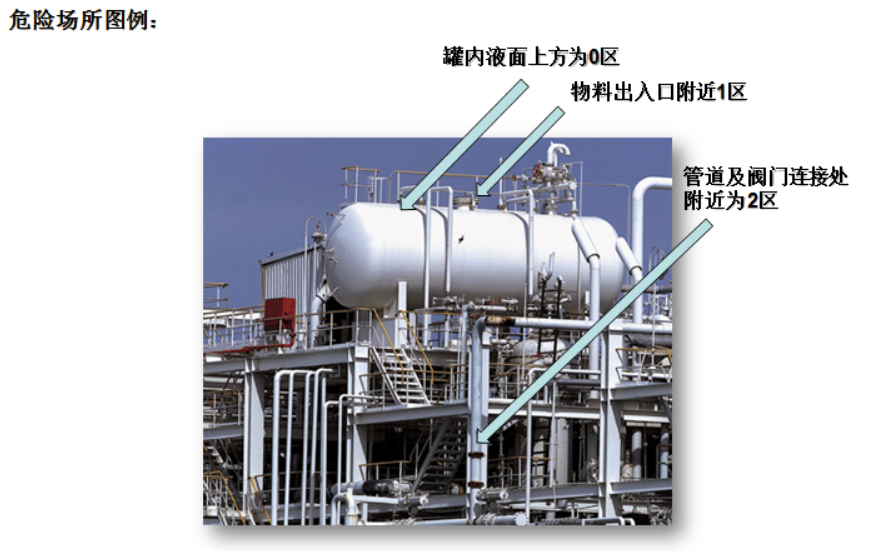項(xiàng)目-幻燈片1.jpg)
With the rapid development of China's economic construction and the increasing scale of industrial production, the issue of explosion prevention has become more important. Explosion proof electrical products with diverse functions and varieties are widely used in various industries such as petroleum, chemical, and coal. Whether explosion-proof electrical appliances can operate stably and safely in various hazardous explosive environments during use requires strict explosion-proof testing before leaving the factory. Zhongnuo Testing has rich experience in product design and testing in the field of explosion prevention. The following is a basic knowledge interpretation of explosive gas and dust environments.
Gas/vapor class
Combustible substances: In explosion-proof technology, it refers to substances (including gases, liquids, and solids) that are inherently flammable and capable of producing flammable gases, vapors, or mists. Flammable liquids are further divided into flammable liquids and combustible liquids.
For example:
Gases: hydrogen, methane, ethylene, acetylene, etc;
Liquids: petroleum (automotive oil), ethanol, monthly liquefied petroleum gas, etc.
Explosive substances refer to mixtures of flammable substances and air.
Several main parameters of explosive gas (vapor) mixtures:
(1) Flash point
Flash point refers to the lowest liquid temperature at which a flammable gas mixture can be formed by the amount of liquid that can be converted into vapor under standard conditions.
The lower the flash point of a liquid, the easier it is to evaporate; The higher the ambient temperature or operating temperature is above the flash point, the faster the evaporation rate of the liquid, and it is extremely easy to form an explosive hazardous environment. For example, the flash point of butane is -60 ℃, which not only evaporates vapor in outdoor places in winter, but also rapidly evaporates vapor at room temperature.
The ambient temperature or operating temperature around a liquid is the main factor affecting its evaporation.
(2) Explosion limit and range
Explosion limit refers to the lowest concentration (lower explosive limit) or highest concentration (upper explosive limit) that can cause an explosion in a mixture of flammable gas (vapor) and air. The concentration range between the lower and upper explosive limits is called the explosion range.
The larger the explosion range, the more opportunities there are to form explosive mixtures; The lower the lower explosive limit, the easier the conditions for forming an explosion.
(3) Relative density
Density refers to the mass of a substance per unit volume. Relative density refers to the ratio of the density of combustible gas (vapor) to air (air is 1).
Relative density is an important basis for studying the diffusion range of explosive mixtures. Flammable gases (vapors) that are lighter than air will diffuse to the upper area of the surrounding space, while flammable gases (vapors) that are heavier than air will remain in the lower area of the surrounding space.
(4) Ignition temperature of explosive mixtures
The minimum temperature of the hot surface required to ignite an explosive mixture.
(5) Classification of explosive gases
The level of explosive gas is convenient for the manufacturing of Class II explosion-proof electrical equipment and intrinsic safety electrical equipment, and is divided into three levels: IIA, IIB, and IIC according to their characteristics. They are classified based on the maximum test safety gap MESG and minimum ignition current ratio MIC of gas/vapor.
Dust type
Combustible dust: Solid particles with a nominal size of 500 μ m or less, which can be suspended in air or precipitated by their own weight, can burn or stew in air, and can form explosive mixtures with air under atmospheric pressure and room temperature conditions.
Non conductive dust: Combustible dust with a resistivity greater than 1 × 103 Ω· m.
Conductive dust: Combustible dust with a resistivity equal to or less than 1 × 103 Ω· m.
Combustible flying fluff: a combustible solid substance, including fibers, with a nominal size greater than 500 μ m, that can be suspended in air or precipitated by its own weight. For example: artificial fibers, cotton and linen, etc.
In GB/T 3836.1-2021 "Explosive Atmosphere Part 1: General Requirements for Equipment", the following classifications are made based on the nature and degree of danger of combustible dust:

Ignition temperature of dust layer: The minimum temperature at which a specified thickness of dust layer ignites on a hot surface.
The ignition temperature of the dust layer (MITL) is determined by placing the dust layer on hot plates at different temperatures under standard atmospheric pressure and room temperature conditions, and measuring the temperature rise of the dust layer. The minimum hot plate temperature at which the dust temperature exceeds the hot plate temperature by 20K is determined.
Minimum ignition temperature of dust cloud: The minimum ignition temperature of the inner wall of the furnace when the dust cloud contained in the air inside the furnace ignites.
The minimum ignition temperature (MITC) of dust clouds is determined according to the testing method and device specified in GB12476.8-2010.
This temperature value is also a basis for selecting and designing dust explosion-proof electrical equipment.
The basic concept of explosion
Explosion is an acceleration reaction of combustion. It is a phenomenon in which combustible substances undergo chemical reactions in air or oxygen under the action of ignition source energy, causing an increase in temperature and releasing thermal and optical radiation. If the combustion rate rapidly increases and the temperature rises sharply, causing the combustion products and surrounding air to expand violently, forming a huge explosive force and shock wave, and emitting strong light and sound, this is an explosion.
Therefore, to generate an explosion, the following two conditions must be met simultaneously: (1) having sufficient combustible substances and a concentration within the explosion limit range; (2) An ignition source with sufficient energy; For example, sparks, arcs, and high temperatures.
Explosive hazardous environment refers to an environment where a mixture of flammable substances and air is ignited and exploded under atmospheric conditions, and the combustion will spread to the entire unburned mixture.
Explosive hazardous areas refer to explosive hazardous areas where personnel are working.
The concept of releasing sources
Release source refers to a location or point where combustible gases, mist, or liquids may be released into the atmosphere to form explosive mixtures.
Continuous release source:
A continuous or expected long-term release source.
For example, handling the interior of containers, storage tanks connected to the atmosphere, vapor spaces above oil (liquid) in storage tanks, and spaces below the water level.
First level release source:
During normal operation, it is expected that there may be periodic or occasional release sources.
For example, at the seals of pumps, compressors, and valves that release flammable substances during normal operation of the equipment; A sampling point that releases substances into the atmosphere during normal operation.
Second level release source:
During normal operation, it is expected that it will not be possible to release, and if released, it will only be an occasional and short-term release source.
For example: flanges, pipe joints, connectors; Seals, safety valves, and exhaust ports of pumps, compressors, and valves that cannot be released during normal operation.
Explosion hazardous area
The basis for classifying explosive hazardous areas (gases/vapors) in China is:
GB3836.14-2014 "Explosive Atmosphere Part 14: Classification of Places - Explosive Gas Atmosphere"
GB50058-2008 "Code for Design of Electrical Installations in Explosive and Fire Hazardous Environments"
Hazardous areas are classified into the following zones based on the frequency and duration of explosive gas (vapor) environments.
Zone 0: A place where explosive gas environments occur continuously or exist for a long time.
Zone 1: Places where explosive gas environments may occur during normal operation.
Zone 2: During normal operation, it is not possible to have an explosive gas environment, and if it does occur, it is only an occasional and short-lived location.
The classification of hazardous areas for explosive gases/vapors is determined based on the nature of the release source.
In principle, in the absence of any external conditions, a zero zone is formed around the continuous release source; Form Zone 1 around the first level release source; Two zones are formed around the second level release source.
Ventilation, that is, air flow, allows fresh air to replace the atmosphere around the release source to promote the escape of flammable gases. Proper ventilation rate can also avoid the persistence of explosive gas environments and affect the type of area.
Ventilation form: A) Natural ventilation; B) Artificial ventilation: overall or partial ventilation.
In open spaces, natural ventilation often plays an important role in dissipating any explosive environment that may occur in the area.

Artificial ventilation: for example, using ventilation fans or exhaust devices. Artificial ventilation is mainly used indoors or in enclosed spaces. Divided into: Advanced Ventilation (VH); There are three types of ventilation: intermediate ventilation (VM) and low-level ventilation (VL).

The classification of hazardous areas for combustible dust is based on:
According to the frequency and duration of combustible dust environments, hazardous areas are divided into three zones. They are: Zone 20, Zone 21, and Zone 22.
Zone 20: Combustible dust continuously or frequently occurs during normal operation, and its quantity is sufficient to form a mixture of combustible dust and air and/or may form uncontrollable and extremely thick places and container interiors.
Zone 21: During normal operation, there may be a sufficient amount of dust to form a combustible mixture of dust and air, but it is not classified as Zone 20.
Zone 22: A place where combustible dust clouds occasionally appear and only exist for a short period of time under abnormal conditions, or where combustible dust occasionally accumulates or there may be a dust layer that produces a combustible dust air mixture.

|
||||||
|
||||||